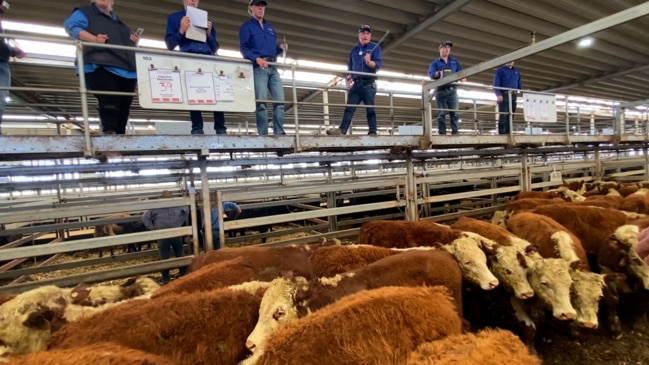Agistment options dry up as season tightens
Opportunities for agistment are proving hard to find as the season tightens across NSW, creating a battle to get a paddock for sheep and cattle.

Livestock producers are prepared to send stock more than 1000km for a paddock as the dry bites into feed reserves in rain-deprived areas of eastern Australia.
But availability of agistment is being curtailed by low livestock prices as some producers with feed opt to take a punt on trading rather than open paddock for others.

Sarah Birchmore and her husband David operate the website agistment.net.au as well as running cattle properties around Winton, Queensland, and said inquiry had increased across eastern Australia.
“With the Bureau of Meteorology forecast of a drier summer, many landholders are choosing to hold back land they may have otherwise offered, keeping it instead for their own stock,” Ms Birchmore said.
“As for how far producers will send stock to feed, we are aware of graziers who are prepared to travel 1000km to the right paddock.
“Obviously, something closer to home is much preferred but if the rainfall has been lower across the whole region, it is necessary to travel farther afield to find somewhere that has had a good season.”
But stock prices have also thrown a wildcard into the agistment availability mix.
“With lower cattle prices, there is potentially more profit to be made from buying cattle to fill the paddocks themselves rather than agisting to other graziers,” Ms Birchmore said.

Nutrien NSW stud stock manager John Settree said he had recently found agistment for one mob but could place more cattle if there were properties available.
“I managed to get a place in South Australia for some cattle from northern NSW, but it’s a fair distance to take them, Mr Settree said.
“But I’d say I could have 30 clients with a combined total of 5000-8000 cattle that could use a home right now if I could find one.”
Mr Settree said stud breeders were considering moving key breeding females to areas with more feed as conditions tightened so they could protect their herd.
And if there is any rain soon, lightening stocking rates could see country bounce back quicker if there was no stock on it.
“I was speaking with someone and they usually get 26-27 inches a year (650-675mm) and they have only had 175mm,” he said.
“The feeling is that we are in for a pretty rough six to eight months.”
Mr Settree said the going rate for agistment had not lifted dramatically as producers looked to support others.
“Cattle producers are paying anywhere from $6-$10 with the top money for cows and calves,” he said.
“Maybe they could be charging more but there could be a time when those offering agistment might need agistment themselves.”




